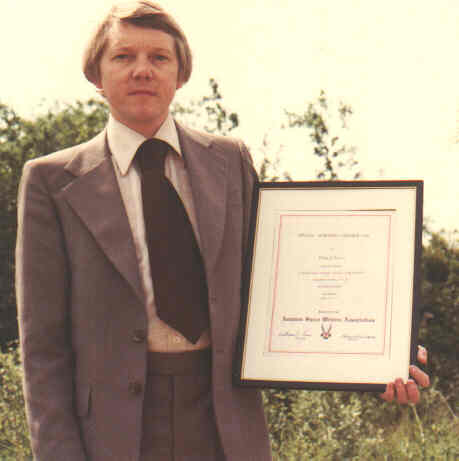

A number of his contemporary articles on the Apollo Moon Missions (from 1964 to 1973) have been used by NASA on their spaceflight history web sites and in some of their history publications. During the heyday of Apollo , Phill attended several moon launches and met with many of the moon walking astronauts, managers, engineers and workers. Some of the Apollo articles are published within the ALSJ.
After the historic success of Apollo , Phill did media coverage of the first joint international manned spaceflight - called Apollo-Soyuz Test Project (ASTP) - between the then Soviet Union and the USA.. He wen to Moscow and examined many of the historic Soviet space artefacts including the manned rocket launcher, Salyut space stations, planetary probes and earth satellites. Many of these items had been shrouded in 'secrecy' behind the Iron Curtain before the ASTP mission.
In 1975, he founded the West European Group of the L-5 Space Settlement Society (now absorbed into the prestige US National Space Society) where human settlements on the Moon, Mars and in space colonies are envisaged.

He has delivered over 650 space talks and lectures across the UK and presented over a dozen major museum quality exhibitions since 1964. He has given numerous radio interviews and appeared on TV several times in UK, Italy and USA promoting space missions.
He has had several items flown in space on the Russian Soyuz manned spacecraft, the Russian MIR space station, the American space shuttle and the International Space Station.
The most prestigious item flown has been The Millennium Space Rock which was aboard MIR from August 1998 to early September 1999 . It subsequently went on an exhibition tour being displayed at several museums and was also displayed at the NASA Kennedy Space Center Visitor Complex from late 1999 through the millennium change to early February 2000.
January 2006